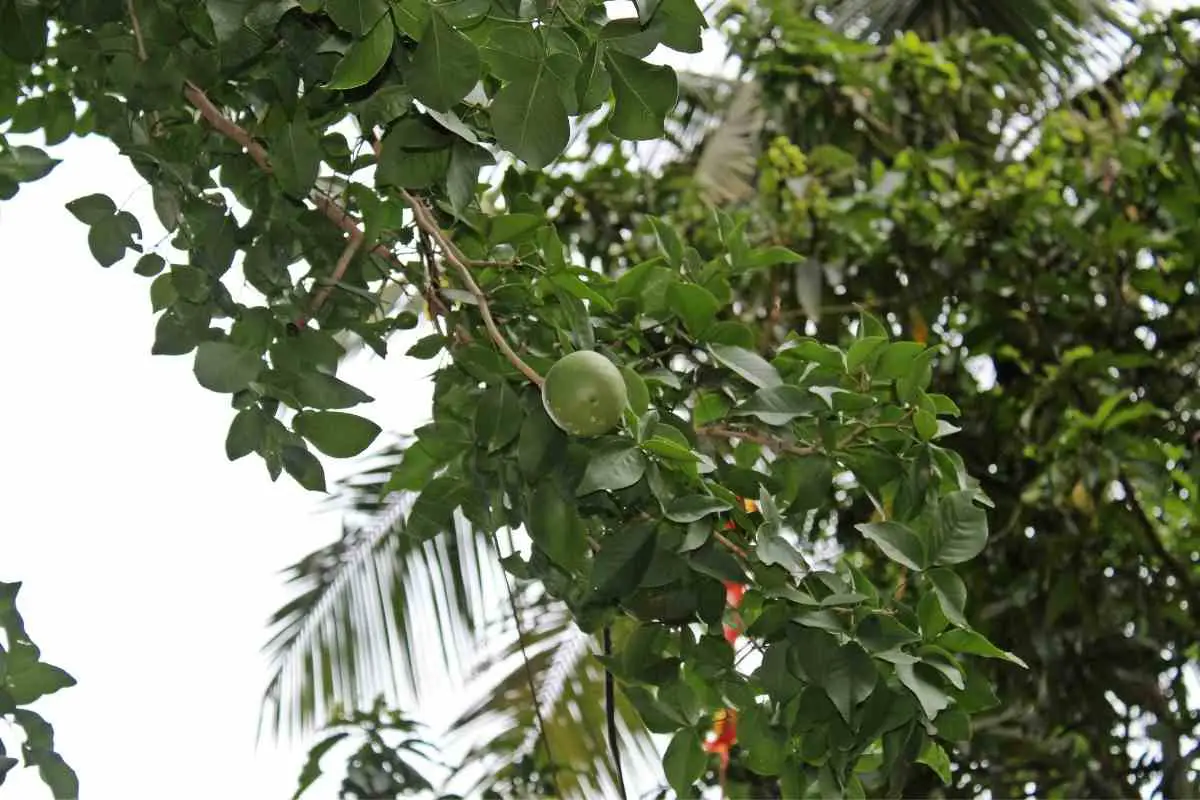The bilva tree is considered, in the Hindu tradition, to be sacred.
It is also valued for its medicinal properties so it comes as no surprise that many people would like to include one in their home.
Bilva is a slow growing tree that gets to a medium height so its size is one thing to consider.
What to Expect? If you have been wanting to find out how to grow bilva tree at home then you’re in the right place. Our ultimate guide tells you everything you need to know.
What Is The Bilva Tree?
The bilva tree, known as the aegle marmelos by its botanical name, is a tree that comes from the Rutaceae family.
More commonly it is known as the bael tree but it is more of a thorny deciduous plant.
These trees can grow to pretty impressive heights and some will exceed 30 to 40 feet!
The branches of the bilva tree have a very unique appearance.
Not only are they particularly sparse but their placement is very irregular and the branches are crooked.
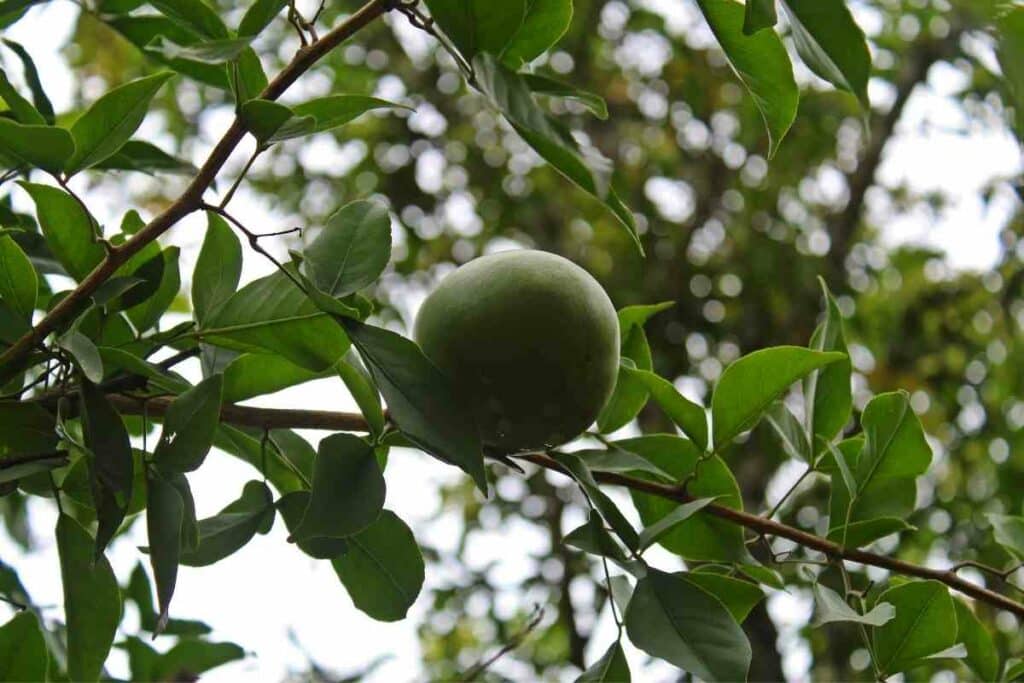
Moreover, the branches of the bilva tree tend to alternate with long, drooping branchlets alongside more mature ones.
The bilva tree is native to India and other parts of South East Asia such as:
- Sri Lanka
- Thailand
- Pakistan
- Bangladesh
These trees do produce fruit and also highly sweetly scented green/white flowers.
The fruits have a similar shape to pears but they tend to get much bigger and most are around the size of a grapefruit.
The fruits have a woody shell and a yellow, gray or green skin.
The bilva tree is not only native to India but it also has a very special meaning in this country.
But we will look at why this tree is so sacred in more detail later on.
If you are planning to grow a bilva tree at home then you should keep in mind that you will need to have the right amount of space.
Don’t Forget – As we have already mentioned, these plants can get very large but the good news is that they’re very slow growing so you’ll have time to find a suitable spot.
Why Are Bilva Trees So Important?
In India, bilva trees are almost always called bael.
Although there are a whole host of other names which we will list later in this guide.
These trees hold a very special meaning within the Hindu community which is the most popular religion in the country with more than 79% of Indians currently practising.

The alternate leaves and the trifolate of the tree are presented to the Hindu God, Lord Shiva and they are mentioned many times in the ancient Hindu religious texts.
People will offer the leaves as reverence and it is believed that the bilva tree actually had spiritual beginnings itself.
It is said that the tree was formed from droplets of sweat from the Goddess Parvati.
But this isn’t the only reason that so many people pay special spiritual attention to the bilva tree.
The trifurcated leaves are said to be a representation of three of the most sacred Hindu Gods; Vishnu, Brahma and Mahesh.
Even if you aren’t a practicing Hindu, the bilva tree can still have a special meaning for you since this tree is also used for its medicinal purposes.
Pretty much every part of the bilva tree can be used for healing purposes including the bark, the roots, and the leaves.
However, most would agree that it’s the fruit that has the most healing power.
Consuming the Fruit
When consuming unripe fruit of the bael tree tree, it is believed, according to the Ayurvedic system, that health issues caused by Kapha and Vata can be cured.
Moreover, since the fruit has a very bitter flavor, Ayurvedic specialists suggest that it will increase Pitta and improve things like digestive issues including ulcerative colitis and chronic diarrhoea.
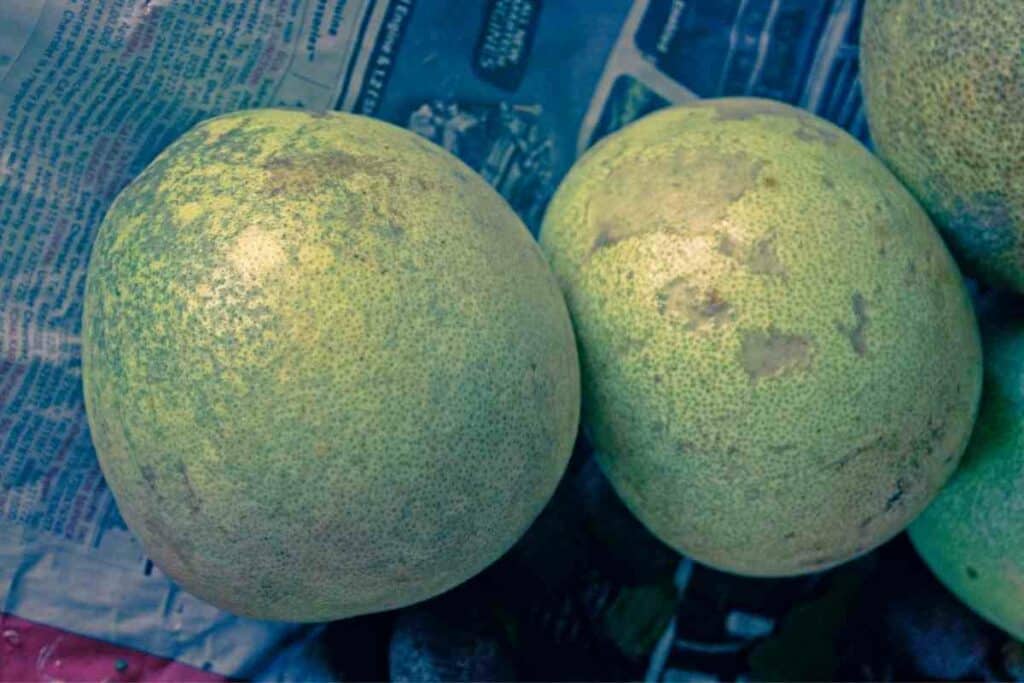
Some people will slice the fruit and dry it so that they can create a powder which is thought to cure dysentery.
Of course, it is always advisable to consult your doctor before using any form of alternative medicine.
The bilva fruit, when ripe, has a very sweet taste that is said to improve the appetite.
Moreover, these fruits are excellent anti-inflammatories and can help to soothe common conditions like nausea and vomiting as well as digestive pain.
As We Have Mentioned – All parts of the bilva tree can be yielded for their medicinal properties and the bark is known for its ability to reduce problems with rheumatoid arthritis as well as aiding in healing symptoms of the common cold.
But how does all of this work?
Well, quite simply, the bilva tree contains:
- coumarins
- flavonoids
- tannins
All of these chemicals have anti-inflammatory properties and some may even be useful in helping to reduce blood sugar.
Alternative Names For The Bilva Tree
Before we look at the best way to care for a bilva tree it’s important to know that these plants go by several different names.
When you are doing your research, it’s worth noting that you may see the following terms:
- Bak tuum
- Ma pin
- Beel
- Kawista
- Bel
- Chilongpak
- Belpatri
- Maredoo
- Bila
- Vilvam
- Soh bel
- Mak tuum
- Beltei
- Indian bael
- Bil
- Sirphal
- Bilak
- Majo ingus
- Bili
- Tum
- Yod maak tuum
- Golden apple
- Bilpatre
- Maja batu
- Bnau
- Maredu
- Indian quince
- Toum
- Vilva marum
Choosing How To Grow Bilva Tree
There are two main options when it comes to how to grow a bilva tree; you can grow from seed or you can purchase a sapling from your local nursery.
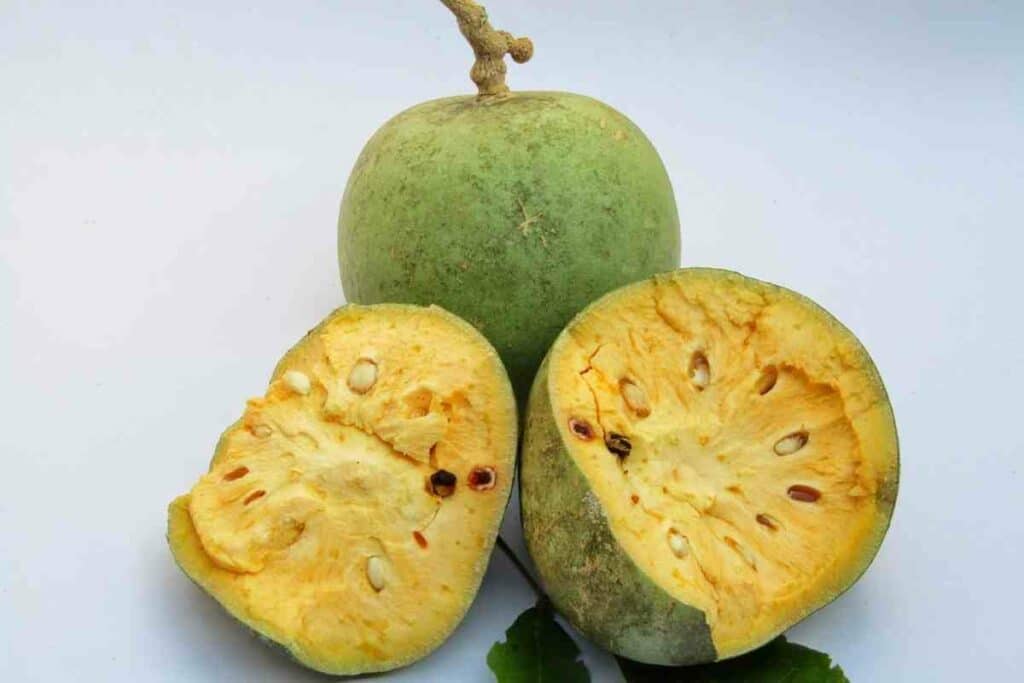
If you want the tree to bear fruit more quickly then we would recommend choosing a sapling. The best time to transplant these saplings is in summer between July and August.
However, if you want to give yourself more of a challenge then you’ll likely want to grow the tree from seed.
To Do This – You will need to choose a quality fruit from an already healthy bilva tree. You’ll need to take the seeds from the fruit and ensure that you remove any pulp. They’ll need to dry thoroughly before planting.
When you’re ready, dig a two inch hold in the soil for your seeds. It is best to sow the seeds between May and July.
Make sure that you cover the soil in mulch; leaves are the best option, as this will help to retain moisture.
And don’t forget to water regularly. Doing this, you should see shoots within around 10 to 12 days.
What Conditions Do Bilva Trees Need?
As with growing all types of plants, it is essential to think about the best placement for your bilva tree.
These trees love a lot of direct sunlight and will thrive in warmer conditions. This is because, natively, they grow in subtropical areas.
This also means that the bilva tree appreciates a good level of humidity.
If you’re growing bilva trees in cooler climates, it is worth remembering that they may struggle over a cold winter so you’ll need to have some form of protection such as a greenhouse or horticultural fleece.
It’s also important to think about the type of soil you’ll use.
Bilva trees will do well in a wide range of different soils but if you want them to thrive then choose something that’s very loamy.
You’ll also want to make sure that the soil is very well draining and has an ideal pH between five and eight as this will ensure a good harvest.
How To Water A Bilva Tree
One of the great things about the bilva tree once it is established is that it is very drought tolerant.
But that doesn’t mean that you shouldn’t have a good watering schedule. In fact, if you want to get the best out of your tree then you’ll want to water it frequently.
Not only will this keep it healthier, but it’ll ensure you get a better fruit yield.
During the Hot Summer – It’s not a bad idea to water the tree every day. However, once the temperature drops, in winter, you will only need to water it twice a week.
How To Fertilize A Bilva Tree
As well as providing water for your bilva tree, you will also need to make sure that it is well fed.
We wouldn’t generally recommend using a chemical fertiliser as bilva trees do very well using organic materials.
Things like manure and vermicompost work particularly well.
Fruit From The Bilva Tree
When the bilva tree grows natively in India, it usually begins to flower around spring with April and May being the prime time.
Fruits will appear shortly after but do keep in mind that you will typically have to wait for around six to eight years before your tree might start fruiting.
So, this isn’t a good option if you don’t have a good degree of patience!
After this, it is recommended to wait until the second fruiting year before harvesting.
Be careful not to let the fruit fall to the ground! You’ll know when they are ripe as they’ll turn a more yellowish colour.
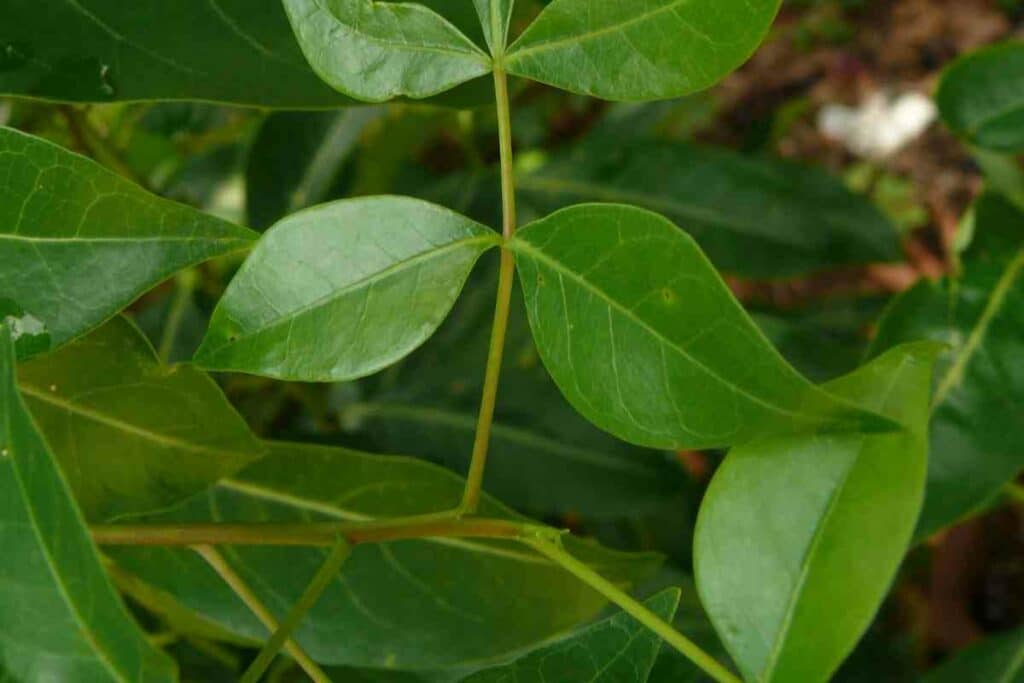
Should I Prune My Bilva Tree?
The bilva tree does get pretty massive so a lot of people want to prune it to keep it under control.
There is no problem with doing this as long as you don’t prune the main stem any lower than one to two meters.
While you don’t really have to put much work into pruning a bael tree, you should remove any dead, broken or weak branches as you find them.
The best time to do this is after you have harvested the fruit. Otherwise, just maintain the shape of the tree and it’ll thrive.
Are There Any Problems I Should Know About Growing Bilva Trees?
The bilva tree is a hardy plant that does best in subtropical regions.
However, it is extremely tolerant of extreme conditions which includes fluctuations in temperature.
Moreover, these trees can grow at high elevations and will keep flourishing up to around 1200 meters above sea level.
The bilva tree will also tolerate a wide range of soil conditions although we would always advise giving it the best chance by following our tips on soil above.
But one of the things that sets this tree apart from the rest is its reputation for being able to survive in places that other fruit trees would keel over.
That said, there are a couple of issues you should be aware of.
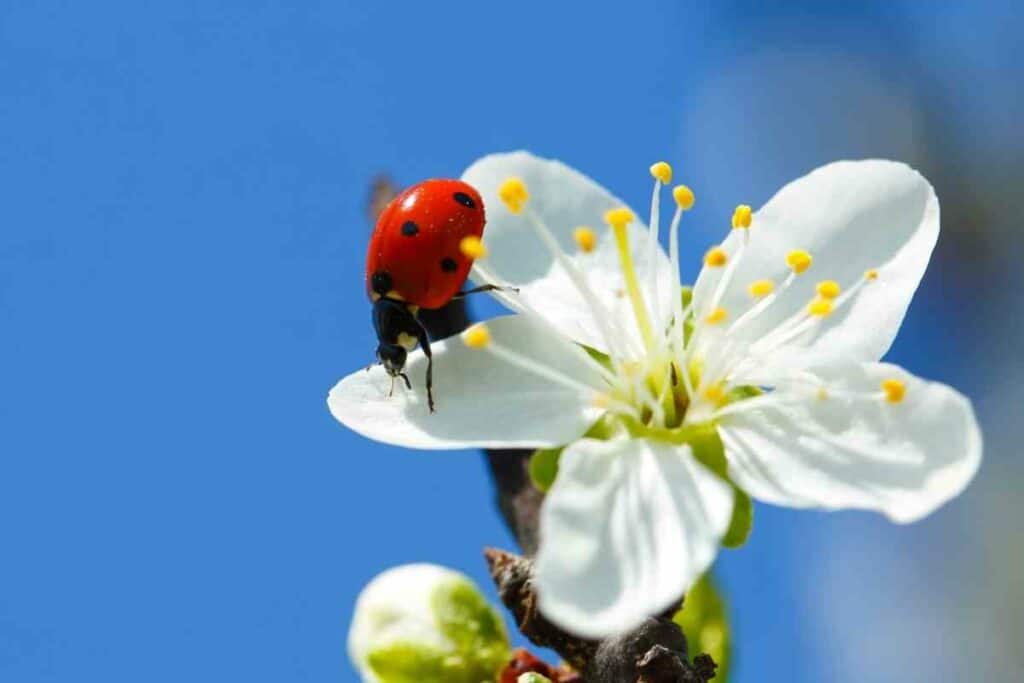
For starters, the bilva tree can fall victim to pests; most commonly, the aphid.
While there are chemical treatments out there for this, there are also some more natural ways of tackling the problem.
For Example – Releasing ladybirds and lacewings into your garden or using neem oil will work well. As we have already touched upon, the bilva tree is extremely slow growing.
You probably won’t get fruit until the tree is at least six years old and even then, you’d be lucky as some take much longer.
It’s also worth keeping in mind that the best harvests and full fruiting won’t occur until the tree is around fifteen years old; so it really is something of a wait!
However, once they fully fruit, you could get a few hundred fruits per season. It has been known that the healthiest bilva trees can produce up to 800 fruits a season!
A Note On Pregnancy And Bilva Leaves
We have covered everything you need to know about growing a bilva tree at home.
However, there is one thing that growers should be aware of if they intend to use the tree for its medicinal purposes.
Pregnant women should be careful when using bilva leaves to aid in nausea and other common symptoms.

There have been many reports that the bael tree could be responsible for miscarriages in pregnant women.
This is because of the tannins within the fruit. While the risk is relatively low when consumed in moderation, large portions over a long period of time could result in miscarraige.
What’s more, when you eat too much of this fruit, it can lead to exacerbated digestive problems.
For this reason, it is probably best to avoid using bael trees during pregnancy and find an alternative treatment.
If you do wish to use it, we would highly suggest consulting your doctor before doing so.
Conclusion
The bilva tree holds a very special place in the hearts of many Hindus in India.
This tree has a sacred meaning and also is known for its many health benefits.
It’s relatively easy to grow and is pretty hardy but you’ll need to be patient as these trees can take years to mature.
